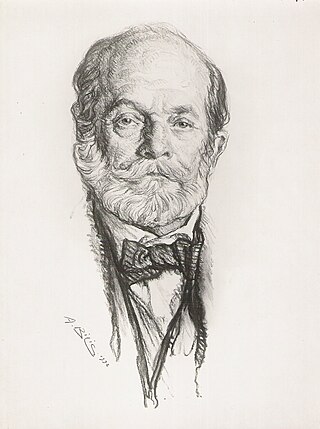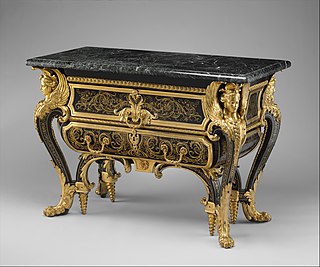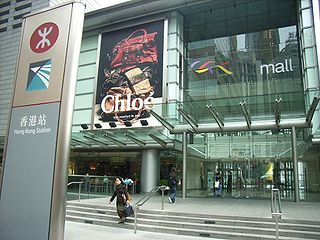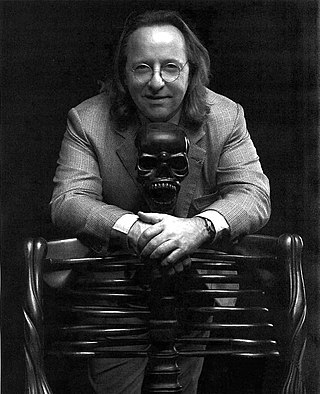
The Gobelins Manufactory is a historic tapestry factory in Paris, France. It is located at 42 avenue des Gobelins, near Les Gobelins métro station in the 13th arrondissement of Paris. It was originally established on the site as a medieval dyeing business by the family Gobelin.

Auguste Perret was a French architect and a pioneer of the architectural use of reinforced concrete. His major works include the Théâtre des Champs-Élysées, the first Art Deco building in Paris; the Church of Notre-Dame du Raincy (1922–23); the Mobilier National in Paris (1937); and the French Economic, Social and Environmental Council building in Paris (1937–39). After World War II he designed a group of buildings in the centre of the port city of Le Havre, including St. Joseph's Church, Le Havre, to replace buildings destroyed by bombing during World War II. His reconstruction of the city is now a World Heritage Site for its exceptional urban planning and architecture.

André-Charles Boulle, le joailler du meuble, became the most famous French cabinetmaker and the preeminent artist in the field of marquetry, also known as "inlay". Boulle was "the most remarkable of all French cabinetmakers". Jean-Baptiste Colbert recommended him to Louis XIV of France, the "Sun King", as "the most skilled craftsman in his profession". Over the centuries since his death, his name and that of his family has become associated with the art he perfected, the inlay of tortoiseshell, brass and pewter into ebony. It has become known as Boulle work, and the École Boulle, a college of fine arts and crafts and applied arts in Paris, continues today to bear testimony to his enduring art, the art of inlay.

Rocaille was a French style of exuberant decoration, with an abundance of curves, counter-curves, undulations and elements modeled on nature, that appeared in furniture and interior decoration during the early reign of Louis XV of France. It was a reaction against the heaviness and formality of the Louis XIV style. It began in about 1710, reached its peak in the 1730s, and came to an end in the late 1750s, replaced by Neoclassicism. It was the beginning of the French Baroque movement in furniture and design, and also marked the beginning of the Rococo movement, which spread to Italy, Bavaria and Austria by the mid-18th century.

Chloé is a French luxury fashion house founded in 1952 by Gaby Aghion. During the next year of 1953 Aghion joined forces with Jacques Lenoir, formally managing the business side of the brand, allowing Aghion to purely pursue the creative growth of Chloé. Its headquarters are located in Paris. The house is owned by luxury brands holding company Richemont Group. Chloé has been worn by many celebrities, including Marion Cotillard, Sienna Miller, Madonna, January Jones, Maggie Gyllenhaal, Kirsten Dunst, Cameron Diaz, Emma Stone, Clémence Poésy and Katie Holmes. The brand is characterized by a youthful and bohemian aesthetic, and has produced several successful fragrances. As of October 2023, Chemena Kamali is its creative director.

The Savonnerie manufactory was the most prestigious European manufactory of knotted-pile carpets, enjoying its greatest period c. 1650–1685; the cachet of its name is casually applied to many knotted-pile carpets made at other centers. The manufactory had its immediate origins in a carpet manufactory established in a former soap factory on the Quai de Chaillot downstream of Paris in 1615 by Pierre DuPont, who was returning from the Levant.
Néotù was a contemporary furniture gallery founded in 1984 in Paris.

Bernard II van Risamburgh, sometimes Risen Burgh was a Parisian ébéniste of Dutch and French extraction, one of the outstanding cabinetmakers working in the Rococo style. "Bernard II's furniture is brilliant in almost every respect. His carcasses are beautifully shaped, his mounts and marquetry are always in complete balance even when extremely elaborate, and there is a logic to his works that allows the eye to comprehend them effortlessly," wrote Ted Dell.

Bill G.B. Pallot is an art historian, art expert, collector and lecturer at the Sorbonne University . He was honored with the French distinction of Ordre des Arts et des Lettres Chevalier (1997) and he is now Officier in the same distinction (2011). In 2016, he was indicted for making and selling false eighteenth century furniture, some of which were sold to the Palace of Versailles.
Pierre Paulin was a French furniture designer and interior designer. His uncle Georges Paulin was a part-time automobile designer and invented the mechanical retractible hardtop, who was later executed by the Nazis in 1941 as a hero of the French Resistance. After failing his Baccalauréat, Pierre trained to become a ceramist in Vallaurius on the French Rivera and then as a stone-carver in Burgundy. Soon after, he injured his right arm in a fight, ending his dreams as a sculptor. He then went on to attend the Ecole Camondo in Paris. He had a stint with the Gascoin company in Le Havre where he gained an interest in Scandinavian and Japanese design. He was famed for his innovative work with Artifort in the 1960s and interior design in the 1970s.
Flamant is a multinational interior and home decoration brand, headquartered in Geraardsbergen, Belgium. The company has its own stores in Belgium, France, Germany and Italy and operates a wholesale network of about 500 multi-brand stores worldwide. It was granted a royal warrant of the Court of Belgium in 2007, that was renewed in 2014 with the succession of Philippe to the Belgian throne.
Noé Duchaufour Lawrance is a French interior and product designer.
John Adamson is a British publisher, translator and writer. He specialises in illustrated books in the fine and decorative arts.
Lignereux is a French company, founded in 1787, which produces objets d'art. Established in Paris and London, Lignereux plays a major role in decorative arts. Lignereux makes objects which are intended for art collectors. In 2015 Lignereux began to produce new objects, decorated by contemporary artists and craftspeople.

Michel Mortier was a French furniture designer, interior designer and architect who was known for his modern designs.

Pierre Renart is a French designer and cabinetmaker, who studied carpentry at the École Boulle in Paris. Among his best-known designs are the Genesis and Ribbon Collections.

Auguste Majorelle was a French art dealer, decorator, ceramicist and cabinet-maker, who established the Atelier d’Art de Decoration in Nancy, France. His son, Louis Majorelle, became one of the earliest modernist cabinet-makers and his grand-son, Jacques Majorelle, was a noted modernist-Orientalist painter.

Marc Berthier was a French designer and architect. His works have made their way into the permanent collections of museums in France and across the world, such as the Centre Pompidou and the Museum of Modern Art. He was a Knight of the Ordre des Arts et des Lettres and received the Grand prix National de la Création Industrielle from the Ministry of Culture, succeeding Roger Tallon. He directed faculty at the École nationale supérieure de création industrielle from 1985 to 2000 in addition to his work alongside Dimitri Avgoustinos.
Éric Sandillon, born in 1969, is a French visual artist, filmmaker, and applied arts teacher.











